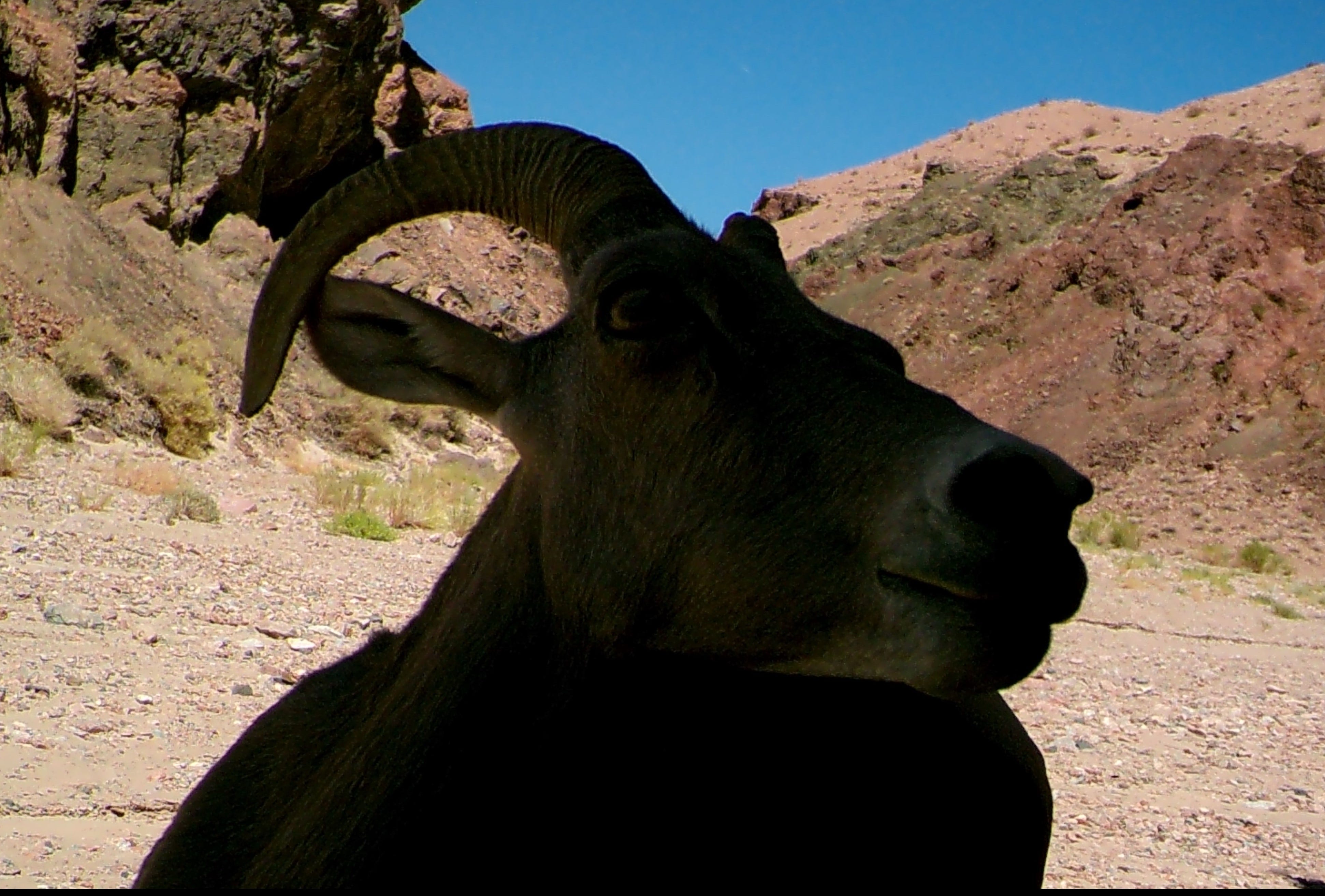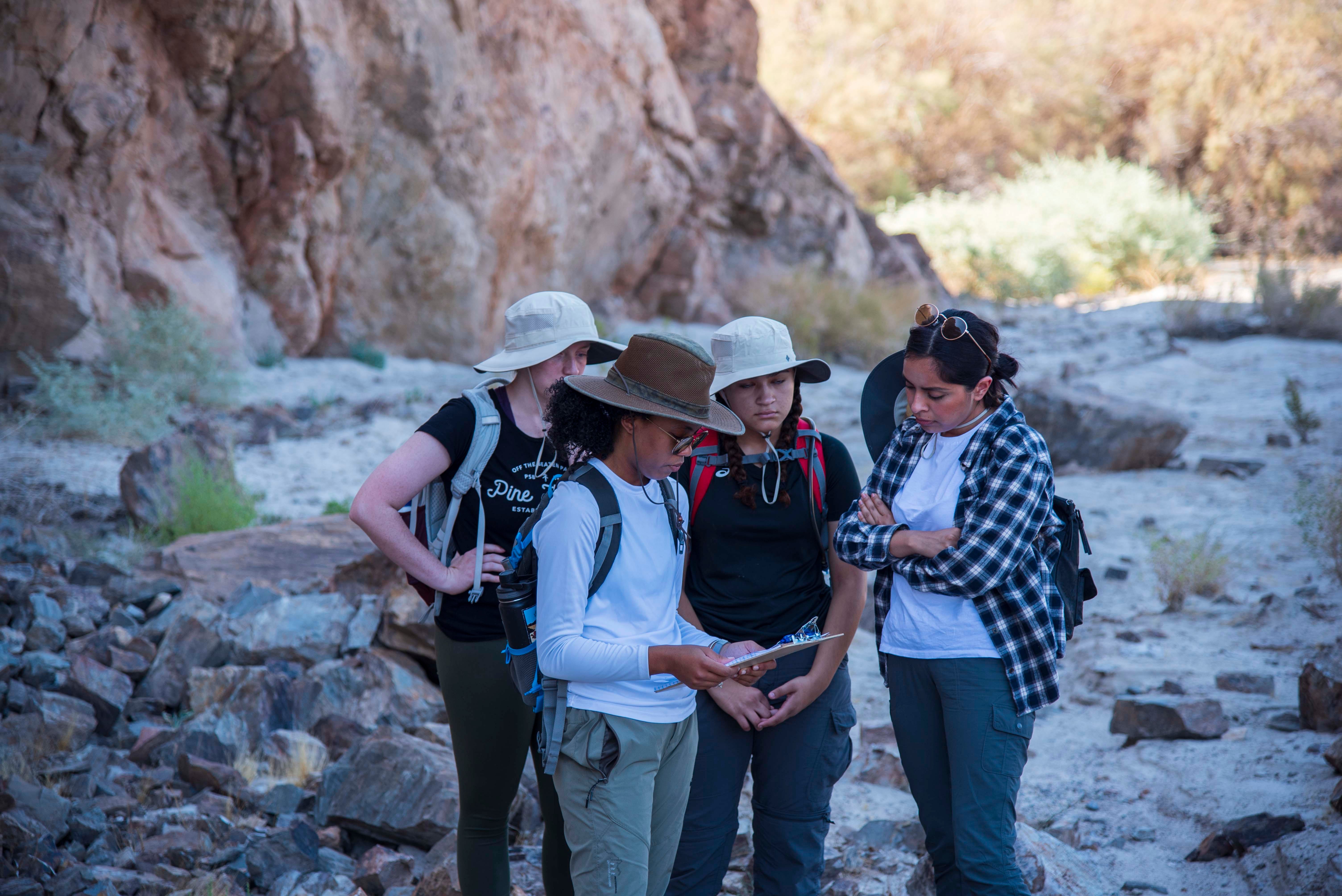The women tracking bighorn sheep in the Mojave
Interns are leading a pilot project in Mojave Trails National Monument monitoring the protected species

By Mary Cooke-Rhyne, Mojave Desert Land Trust Education Coordinator
The temperature is around 105 degrees. Long freight trains pass by; their conductors almost always wave at us. Maybe they wonder why we’re out in the middle of the Mojave with all this hiking gear.
We’re in Afton Canyon in Mojave Trails National Monument where we hike over four miles on any given day. We’ve seen egrets, lizards, eagles, hawks, and one coyote. However, what we’re looking for, I have yet to see in person. We’re tracking bighorn sheep.

WISDOM (Women in Science Discovering Our Mojave) is a data collection pilot project run by the Mojave Desert Land Trust in collaboration with the Bureau of Land Management. Through a grant from Southern California Edison, the project aims to engage women in the field of science.
According to UNESCO, women comprise only 30% of the world’s scientists. In the U.S., that number is slightly higher at 43%. However, women comprise only 33% of environmental scientists in the U.S. Representation is an important matter in all aspects of our diverse nation. Our scientific community is growing and needs to change, reflecting the diversity of the American population. WISDOM aims to help engage women in STEM fields by gaining knowledge and conducting scientific research, both in the field and in the office.

The WISDOM project was launched this summer with three smart young women who are devoted to furthering their understanding of science.
- Alejandra Lopez is native to Long Beach, CA. She went to Cal State University, Long Beach and graduated with a Bachelor of Environmental Science & Policy; minoring in Geology. She lives in Long Beach and commutes from there to Barstow where everyone gathers for field days. She is currently taking time off from school, before deciding what she would like to further pursue, though she knows it will be within the sciences.
- Abby Rogers is native to Auburn, GA. She received her Bachelor’s degree in Biology from the University of North Georgia. While in Georgia, she interned with the Center for Disease Control and Prevention, studying mosquito populations. Abby and her husband came to the desert when he received orders to move to the Marine Corps Air Ground Combat Center (MCAGCC) in 29 Palms. She is currently in graduate school, working toward a Master’s in Microbiology.
- Elena Palacios is native to Big Bear, CA. She is currently in her sophomore year, studying for a Bachelor’s degree in Environmental Science at San Bernardino Valley College. She commutes from either Johnson Valley or San Bernardino for this project.
As interns, they are conducting research on the movement and population size of bighorn sheep in Afton Canyon, a 45-minute drive east of Barstow. They are studying the area to help the BLM provide a range of recreational access in the National Monument, including camping in the Canyon, while also ensuring the well-being and protection of wildlife and other sensitive resources.

Desert bighorn (Ovis canadensis nelsoni) are a protected species. They migrate during the different seasons, accessing areas that have food, water, and shelter. They can be found in valley floors and up in the high rocky areas of the desert. Within the canyon, they can stay up high to avoid predators or come down to drink and forage for food. They generally move in large herds.
As of now, the interns have been able to attend three field sessions and two office days. Field sessions involve hiking to and monitoring seven motion-sensor game cameras that are strategically placed throughout the canyon area. They change out the SD cards in the cameras, and images caught by the motion sensor are downloaded and analyzed during office days.
To date, multiple bighorn sheep have been caught on camera; up to seven on one image alone. The images have also caught a variety of other animal species sharing space in the canyon: roadrunners, jackrabbits, cottontails, ducks, lizards, and a bobcat.
Who knows what other kinds of animals will turn up in the future?
Stay tuned for more developments!